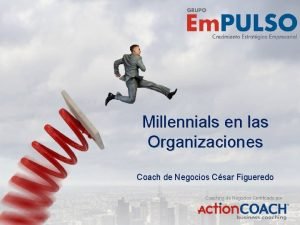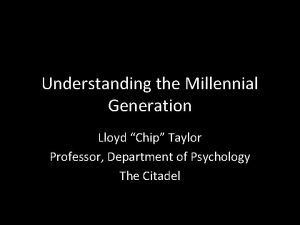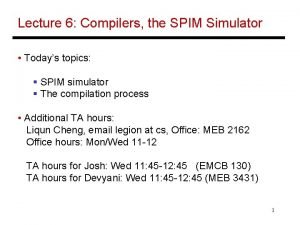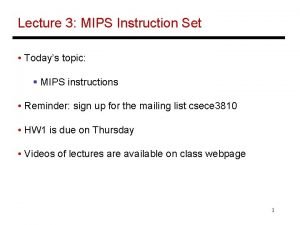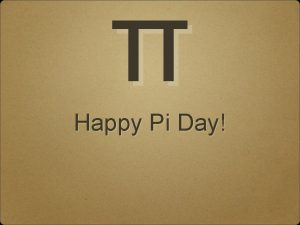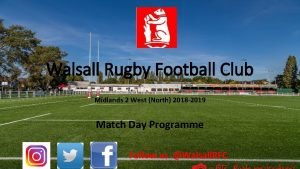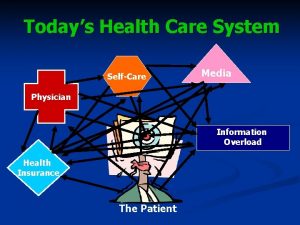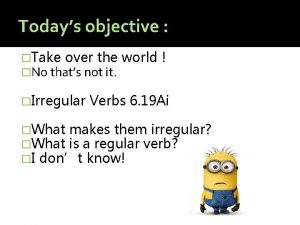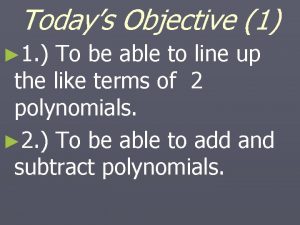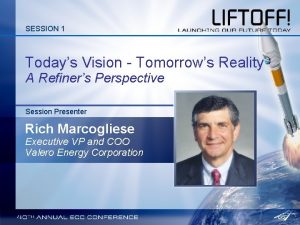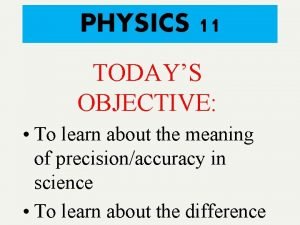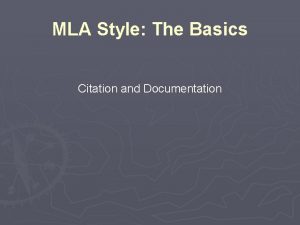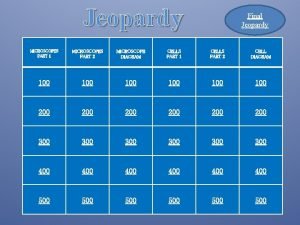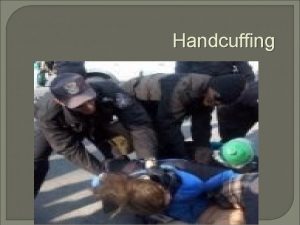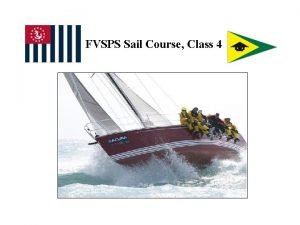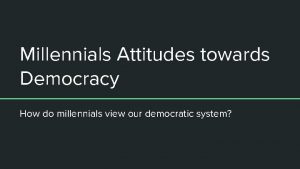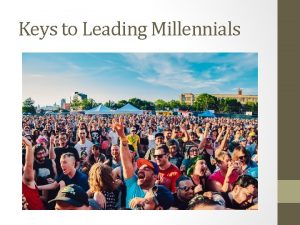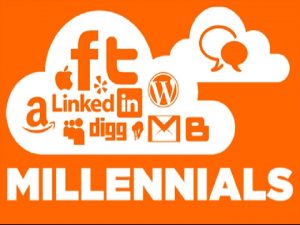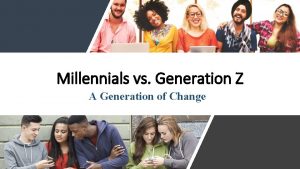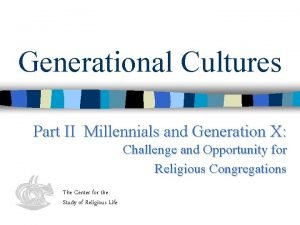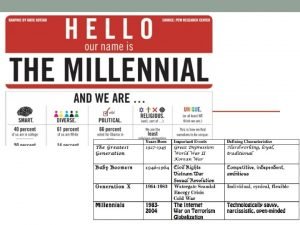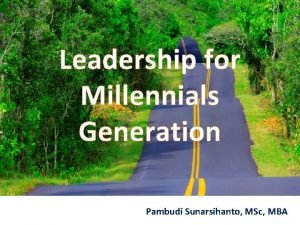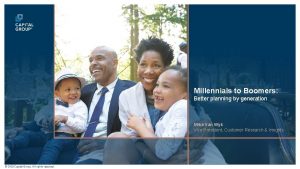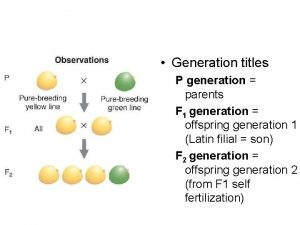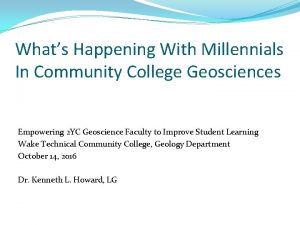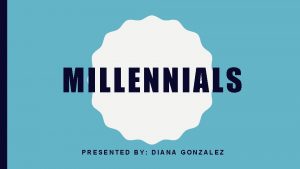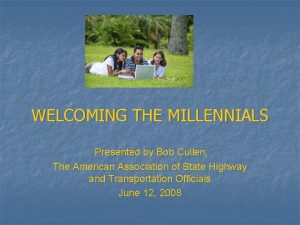Millennials The Generation of Todays College Student Presented



























- Slides: 27

Millennials: The Generation of Today’s College Student Presented by: Jabal Moss, Lynsey Nejman, and Acquanetta Parrott “The young do not know enough to be prudent, and therefore they attempt the impossible -- and achieve it, generation after generation. ” -Pearl S. Buck

Learning Objectives: Classmates should be able to: A. Define the term millennials. B. Identify their connections to the college environment. C. Identify the seven traits of the millennial generation. D. Identify advantages of this group and how they are changing the way we do education. E. Understand the challenges of the millennial generation. F. Identify proper developmental theories to aid this group of contemporary college students.

Millennials: Defining the Term Millennials are the largest and most diverse generation to ever attend college. This generation is born between 1982 and 2000. Millennials are noticeably: Self-confident Optimistic Multi-taskers Independent Source: Huertas & Rivera, 2006; Martin & Monaco, 2007

Connections to the College Campus Millennials expect to be engaged in their learning; they will not be passive. Have a high expectation of technology use. It is necessary to be provided information on services, immediacy, interactivity and group activities. Source: Northern Illinois University, 2012

Seven Core Traits of Millennial Generation

Special Always treated as special and important Carry a sense of entitlement Expectation of frequent positive feedback Important to the nation and parents’ sense of purpose Crave attention

Sheltered Highly protected as children Rarely left unsupervised Unable to advocate for themselves “Spared” from unpleasant experiences

Confident Motivated & Goal-oriented individuals Expectations of collegiate experience to launch them greatness High levels of optimism Highly connected to their parents Assertive and believe they are “right”

Team-Oriented Group oriented rather than being individuals Sacrifice their own identity to be accepted Prefer egalitarian leadership, not hierarchies Orientated towards service learning and volunteerism

Achieving Higher achievement levels (such as good grades, involvement in cocurricular activities etc. ) Pressures Focus of deciding career path more on the achievement rather personal development

Pressured Struggle with handling free time and time management Pressures Pushed to succeed hard to achieve, to avoid risks, and to take advantage of opportunities

Conventional Civic minded Fear of being considered nonconformist Their clothing, music, and cultural markings will be mainstream Value parental opinions Support & value social rules

Advantages and Changes to Education “Through the evolution of society, media, technology, and communication… teachers must understand their audience in order to develop instructional methods and delivery styles that will produce effective learning outcomes. ” Source: Martin & Monaco, 2007

Advantages and Changes to Education Con’t. Quantity and Quality of campus facilities play a major role in college decision of student. Morphing generational characteristics and space are linked. Extracurricular infrastructure is important as well. Source: Rickes, 2007

Advantages and Changes to Education con’t. Collaborating Connecting Teamwork skills are necessary for success. The prevalence of digital technologies provides unlimited access of information. Creating Social Change Community service, charity, and voting is at the core of their existence. Source: Grover & Groscurth, 2009

Challenges for Millennials Intrusive parents Need for validation Desire for structure Ethics Pressure Conflicts with other generations In school In the workplace

Intrusive Parents Howe and Strauss: Special Sheltered Confident Pressured Conventional Baby Boomer Parents Desire to establish how good their parenting has been Feels guilty about leaving parents Have little to no conflict resolution experience Cannot make decisions without external guidance Require a lot of direction “Why? ” Expect justification from authority (i. e. professors and bosses)

Need for Validation Have been rewarded for participation and good behavior Achieving an outcome requires a reward Need to receive credit for everything they do Boomers and Gen Xers in the workplace see this as needy Also stems from social media Assessed objectively, so acutely aware of the concept of “fairness” Quick to claim unfair practices, i. e. admissions decisions, promotions and assignments at work

Desire for Structure Assessments have always been cut and dry Need direction in projects, assignments Seek direction when little is given Professors and bosses from other generations perceive this as lack of problem solving skills Following the rules gives rewards Expect high grades for adhering to prescribed academic standards Rubrics are necessary Creativity was never rewarded or expected, so millennials are not creative Do not go “above and beyond” Everything designed for them Do not take risks

Pressure Feel pressured to succeed Have been strongly encouraged to achieve Volunteer to take on too much Boomers have created paths for them to follow, so millennials cannot create their own paths With social media, successes and failures are more public than any other generation “The end result is to perform at least, and excel at best” 1 1 De. Bard, 2004, p. 38

Ethics Very aware of the difference between right and wrong Zero Tolerance culture Expect all rules to be followed and rule-breaking to be punished Extensively rewarded for doing the right thing Caused fear of getting caught doing the wrong thing Technology makes getting caught less likely “The pressure to achieve desired outcomes can blur the ethics for the overly ambitious” 1 This generation has pushed the limit on what they can get away with 1 De. Bard, 2004, p. 43

Conflicts With Other The biggest challenge for millennials, Generations whether in the workplace or the classroom is learning how to work with other generations Because millennials are the most diverse generation, they do not spend as much time or effort contemplating the cultural struggles of previous generations “Do as we say, not as we did” 1 1 De. Bard, 36 2004, p.

De. Bard’s Comparing Generational Values In the Classroom: In the workplace: Views toward career goals: Boomers: top of the totem pole Gen Xers: transferable skills Millennials: working in a team Views toward rewards: Views toward education Boomers: creativity Gen Xers: logic Millennials: structure In the world: Views toward “the big question” Boomers: “What does it mean? ” 1 Boomers: position of power Gen Xers: “Does it work? ” 1 Gen Xers: autonomy Millennials: “How do we build it? ” 1 Millennials: making a difference Views toward evaluation: Boomers: traditional annual reviews Gen Xers: upon request Millennials: constant updates 1 From De. Bard, 2004, p. 40

Developmental Theory to aid the Millennials: Psychosocial Theories: Examine the content of development, the important issues people face as their lives progress, such as how to define themselves, their relationships with others and what to do with their lives. Examples: Chickering’s Theory of Identity Development - The Seven Vectors, Identity Theory, and Scholossberg’s Transition Theory Source: Harper, Jones, & Schuh, 2011

Developmental Theory to aid the Millennials con’t: Cognitive-Structural Theories: The mind’s structures are viewed as arising one at a time, always in the same order, regardless of cultural conditions. The age and rate the person travels through each stage varies. Each stage builds upon the one before it. Examples: Perry’s Theory of Intellectual and Ethical Development and Later Cognitive. Structural Theories Source: Harper, Jones, & Schuh, 2011

Conclusion Millennials are the generation that is changing the way that higher education operates. The seven traits that classify them, make them easily noticeable. The challenges that they face are unique to their generation and helps us apply theory to practice. We must remember that with this generation theory helps us fix their issues, but they (the Student) is bigger than theory you apply to help them.

References De. Bard, R. (2004). Millennials coming to college. New Directions for Student Services, 106, 33 -45. doi: 10. 1002/ss. 123 Elam, C. , Stratton, T. , & Gibson, D. D. (2007). Welcoming a new generation to college: The millennial students. Journal of College Admission, Spring 2007, 20 -25. Retrieved from http: //files. eric. ed. gov/fulltext/EJ 783953. pdf Howe, N. & Strauss, W. (2007). Millennials Go to College (2 nd ed. ). United States of America: Life. Course Associates Huertas, M. & Rivera, B. (2006). Millenials: challenges and implications to higher education. Retrieved from http: //www. nyu. edu/frn/publications/millennial. student/Challenges Jones, S. & Abes, E. (2011). The nature and uses of theory. In Student Services: A Handbook for the Profession (5 th ed. , pp. 138 -167). San Francisco: Jossey-Bass. Martin, M & Monaco, M. (2007). The millennial student: a new generation of learners. Athletic Training Education Journal, 2007, 42 -46. Retrieved from www. nataej. com Millennials: our next generation in higher education (2012). Retrieved from www. niu. edu/facdev Pinder-Grover, T. & Groscurth, C. (2009). Principles for teaching the millennial generation: innovative practices of u-m faculty (CRLT Occasional Paper, No. 26). Retrieved from the University of Michigan, Center for Research on Learning and Teaching website: http: //www. crlt. umich. edu/publinks/occasional. php Rickes, P. (2009). Make way for millennials! How today’s students are shaping higher education space. The Journal of the Society for College and University Planning, Winter 2009, 8 -17. Retrieved from www. scup. org/phe. html
 Millennials definición
Millennials definición Millennials and printers meme
Millennials and printers meme First generation antipsychotics
First generation antipsychotics Lord your mercy endureth forever
Lord your mercy endureth forever Generations
Generations We have class today
We have class today Todays with apostrophe
Todays with apostrophe Todays worldld
Todays worldld Define radient energy
Define radient energy Todays globl
Todays globl Whats todays wordlw
Whats todays wordlw Chapter 13 marketing in today's world answer key
Chapter 13 marketing in today's world answer key Todays plan
Todays plan Todays sabbath lesson
Todays sabbath lesson Sabbath school welcome
Sabbath school welcome Walsall rugby club
Walsall rugby club Todays health
Todays health Todays objective
Todays objective Todays objective
Todays objective Todays objective
Todays objective Todays whether
Todays whether Todays vision
Todays vision Todays objective
Todays objective Today planetary position
Today planetary position Mla cover page
Mla cover page 3 statements of cell theory
3 statements of cell theory Handcuff nomenclature quiz
Handcuff nomenclature quiz Todays weather hull
Todays weather hull
